Do you want to grow vegetables in containers? Great idea! As a beginner, you must have a lot of questions about it. What is vegetable container gardening? What vegetables can you grow in containers? This article will answer some basic questions and give you some container gardening tips.
Vegetable Container Gardening Basics
Vegetable container gardening is the process of growing vegetables in pots and other types of containers around you. Some reasons for growing vegetables in pots are:
- Growing in the City: If you are living in a city or a place with no land for gardening, you should consider growing some vegetables in containers.
- Growing Vegetables Indoors: If you are tired of going out under the sun to tend to or pick from your plants, you could grow them on your kitchen windowsill or under a grow light.
- No Suitable Soil: Your garden soil may not be suitable for the kind of vegetables that you intend to grow. Using the right potting mix, you can grow any kind of vegetable.
- Transferring the Vegetables: With container gardening, you can move your plants indoors if the conditions outside are not favorable.
- Suitable for beginners: As a beginner, container gardening is better for you because potted plants are easier to care for and have less weed competition.
Now that you have so many reasons to grow vegetables in pots, you surely want to get started right away. What materials do you need to grow vegetables?
What You Need for Vegetable Container Gardening
Don’t worry, it’s not a long list.
Containers …of course!
You need containers for growing your plants. The size of your container matters. A larger container holds more potting mix, water, and nutrients. A larger container also provides more room for the root of your plants. The depth of the container is determined by the soil-depth requirement of the plant root.
Examples of plants that require a minimum pot-depth of 4-5 inches are:
- Basil
- Chives
- Lettuce
- Radishes
- Coriander
Some plants that need a minimum pot-depth of 6-7 inches are:
- Peas
- Garlic
- Thyme
- Onions
- BushA plant without a distinct trunk, short, and has a lot of leaves (i.e. thick shrub). An example of a bush is bush tomatoes. beans
You should get containers with a depth of at least 8-9 inches if you are growing:
- Spinach
- Peppers
- Eggplant
- Cucumber
- Pole beans
If you are growing any of the plants below, you should get a pot with a minimum depth of 10-12 inches:
- Dill
- Okra
- Beets
- Broccoli
- Lemongrass
You can use pots made of clay, plastic, or any material of your choice. Make sure that the container is well-drained and has holes for water drainage.
Potting Mix
What is potting mix, and why do many gardeners choose potting mix over topsoil in container gardening? A potting mix is not soil. Instead, it is a blend of ingredients that allow oxygen to reach the root of your plants while retaining moisture and nutrients.
Your garden soil is not recommended for potted plants because the soil gets compacted, is not well-drained in pots, nor evenly moist. It would be best to go to a garden shop to purchase the right potting mix for your vegetables.
Seeds, Seedlings, Cuttings, Roots
To grow vegetables, you need seeds, seedlings, cuttings, or roots. Some vegetables like tomatoes, watermelons, and cucumbers can be grown from seeds. As a beginner, you should consider buying seedlings from nurseries because seedlings have already been started and are easier to grow.
Some vegetables like broccoli, lettuce, and other leafy greens can be grown from their stems or cuttings. Instead of throwing the stem or cuttingA part of a plant cut from a mother plant used to grow a new plant. For example, you can cut the stem of the rhizome of mint to grow new mint. of your leafy greens away when preparing meals, you should regrow them. Potatoes, onions, and other root vegetables can be regrown from their roots.
You can buy the seeds, seedlings, cuttings, or roots of vegetables you want to grow from a local gardening shop. If you can, you should consider starting the plants yourself.
Water and Nutrients
Your potted plants need to be watered regularly. Make sure that your container and potting mix are well-drained. Your potted plants also need to be fertilized occasionally. A potting mix does not contain a lot of nutrients for your plants, and as you continuously water the plants, some nutrients get lost.
You should use a fertilizerAny material added into the soil (or sprayed on leaves) to give more nutrients to plants. Fertilizers often give Nitrogen, Phosphorus, and Potassium (NPK) to plants. Fertilizers can be organic or inorganic. with the required mix of nutrients for your plant. Be careful when mixing compostAn organic matter made from decomposed plant materials. Compost is often made from decomposing shredded leaves, hay, fruits, and other plant materials at a ratio of 25 part dry brown materials to 1 part fresh green materials. with your potting mix as compost can affect the porosity of the potting mix.
Location
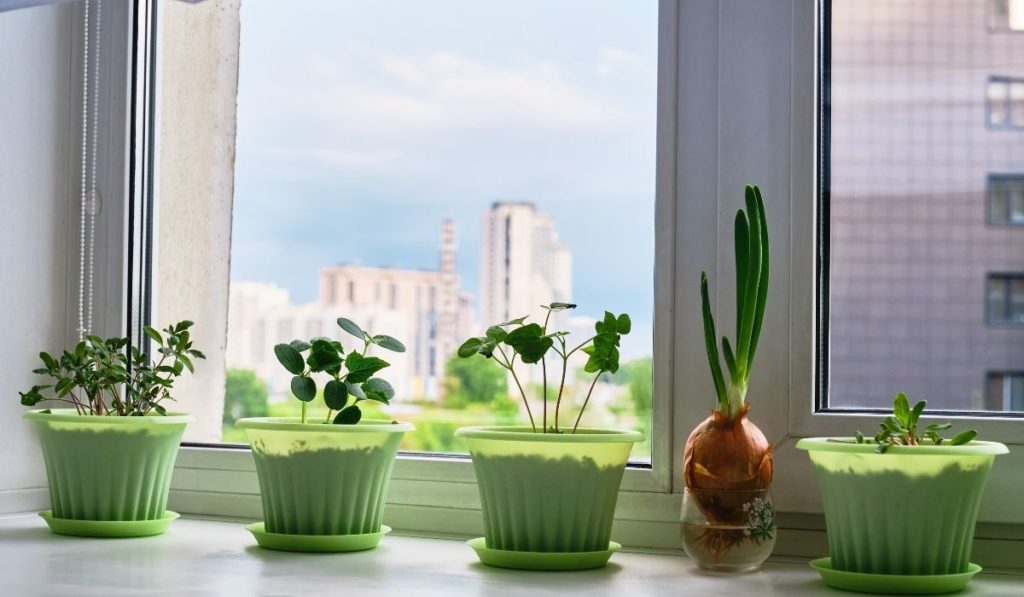
Vegetable plants grown in containers, like every plant, need sunlight. According to what you are growing, vegetables need full sunFull sun refers to six (or more) hours of sunlight. Some plants require full sun to grow and produce fruits. Examples of plants that require full sun are tomatoes, potatoes, carrots, etc. (more than 6 hours of direct sun), partial sun (4-6 hours of direct sunlight), or shade (less than 4 hours of direct sun).
When buying your seeds, ask the shop owner or check the seed packet for the light requirement of the vegetable. With time, you will know the light requirement of various plants.
If you are growing your potted plants indoors, you can place them on windowsills or under a grow light.
Have you gathered everything you need to grow vegetables in containers? Let’s grow some potted plants.
Easy Vegetables for Container Gardening
Tomatoes
Tomatoes are among the easiest and most rewarding vegetables that beginners can grow. You can grow most tomato varieties in pots, but I suggest that you grow dwarf varieties. Dwarf tomatoes grow quickly and do not take much space.
You can plant your tomatoes outside after frost. Tomatoes, according to the varietyPlant varieties make up a species. Varieties are plants in a species that have unique characteristics from other plants in that species. For example, watermelons have varieties that are seedless., take 70-120 days to be ready for harvest.
Potatoes
Potatoes are root vegetables that are very easy to grow in containers. The best containers to grow potatoes are growing bags. With grow bags, you can cover more parts of potato stem as it grows, resulting in more tubers since only unexposed parts of the stem produce tubers.
Potatoes can be started immediately after frost. According to the variety, you should get your harvest in late May to August.
Bagged potatoes give you a healthier and larger yield. You should use bags when growing potatoes.
Beans and Peas
Though not the same plants, beans and peas have similar requirements, and you can easily care for them. As legumes, beans and peas (with the help of a friendly bacteria) can produce nitrogen for themselves.
Plant peas and beans 1-2 inches deep and separate them 2-3 inches apart. Beans and peas are hardy plants but should not be exposed to frost.
Leafy Greens
Leafy greens are vegetables that you grow for their leaves. Examples of leafy greens are:
- Kale
- Lettuce
- Cabbage
- Cauliflower
- Mustard greens
Most vegetables can be grown from seeds, seedlings, or stem. To regrow vegetable from your vegetable kitchen waste, insert the stem in a glass of water (1-2 inches). Continuously change the water, and in about two weeks, you should see roots. When you see roots, you can transplant into a pot.
You can harvest leafy greens continuously when they are ready for harvest.
Herbs
Herbs are plants that you grow for their spicy flavors. They add different layers of flavor to cooking and beverages. Herbs are very easy to grow and are suitable for container gardening. Examples of herbs that you can grow are:
- Dill
- Mint
- Parsley
- Rosemary
- Lemongrass
Just like leafy greens, most herbs can be regrown from seed or cutting. The process of growing herbs from cuttings is the same as that of leafy greens.
I recommend that you grow your herbs indoors so that your room will have a fine scent. Most herbs are perennialAny plant that completes its life cycle in more than two years is a perennial plant. Perennial plants have continuous flowering and fruiting seasons. Most shrubs and trees are perennial. Mint and other herbs are also perennial., so you can have fresh herbs available for a long time.
The vegetables above are easy to grow in pots and are readily available in gardening shops. I have some useful tips for you as a beginner.
Container Gardening Tips for Beginners
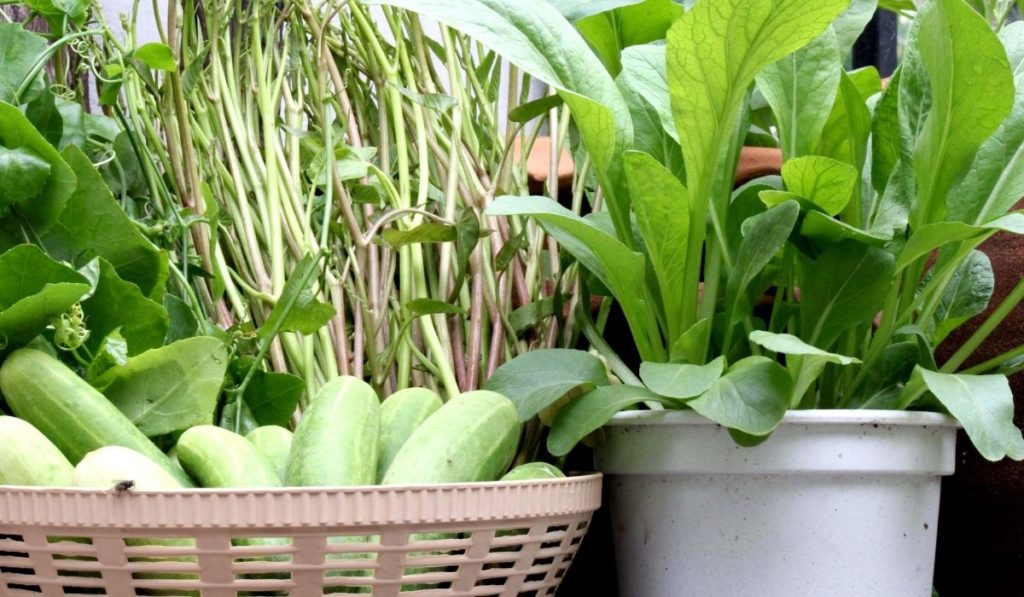
- You can add earthworms to your pots if you choose.
- For optimum lighting, place your indoor pots on southern windowsills or use grow lights.
- Inspect your outdoor plants for pests and diseases before you move them indoors
- When your indoor plants are in their flowering stage, take them outside for pollinationPollination is the transfer of pollen grains (i.e. plant sperm) from the anther (male) part of a flower to the stigma (female) part of a flower. Some plants such as avocados and maize must be cross-pollinated (i.e. pollen grains moving from one plant to the other). Others like pepper can be self-pollinated (i.e. pollen grains fertilizing flowers from the same plant)..
- Join a local gardeners club to get additional useful gardening tips
Did you find the above tips useful? We hope so!
Conclusion
Container gardening brings your vegetables closer to you. You can grow almost any vegetable in containers, but the easiest vegetables to grow are tomatoes, herbs, leafy greens, and others mentioned above.
Remember to use a potting mix for your potted plants and water your plants regularly.
What do you think? As a beginner, when will you grow your first vegetables? Share your thoughts in the comment section below.
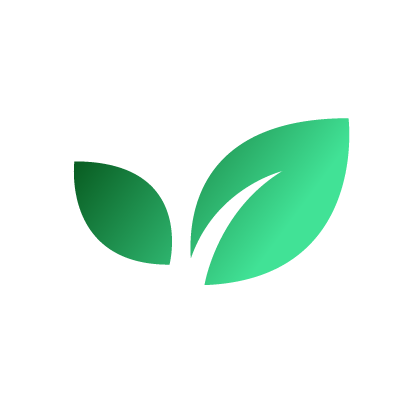
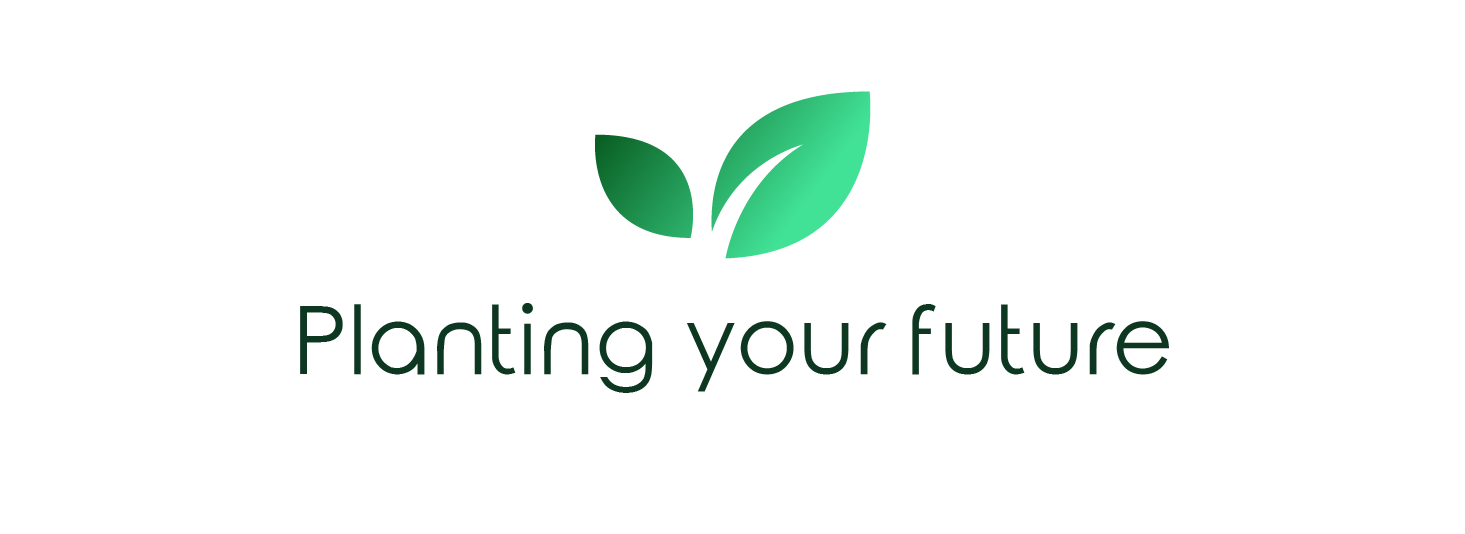

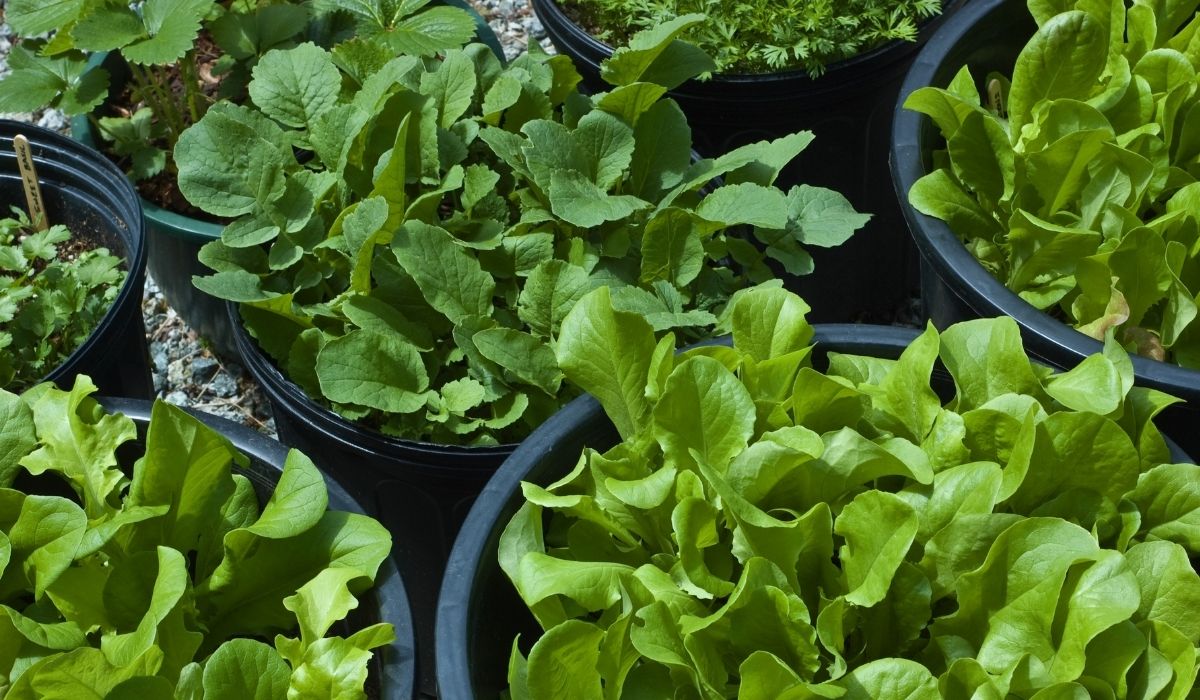
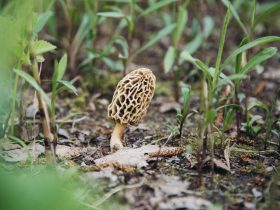

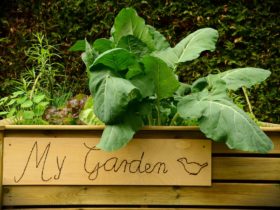
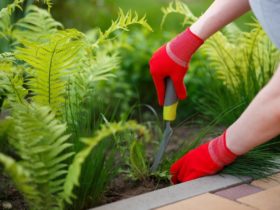
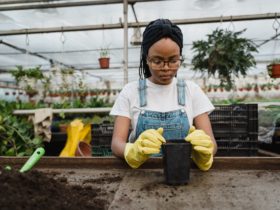
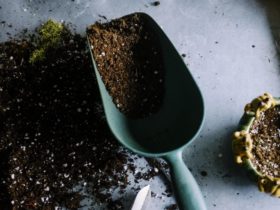

Leave a Reply